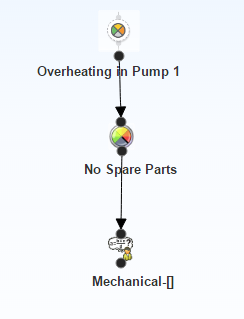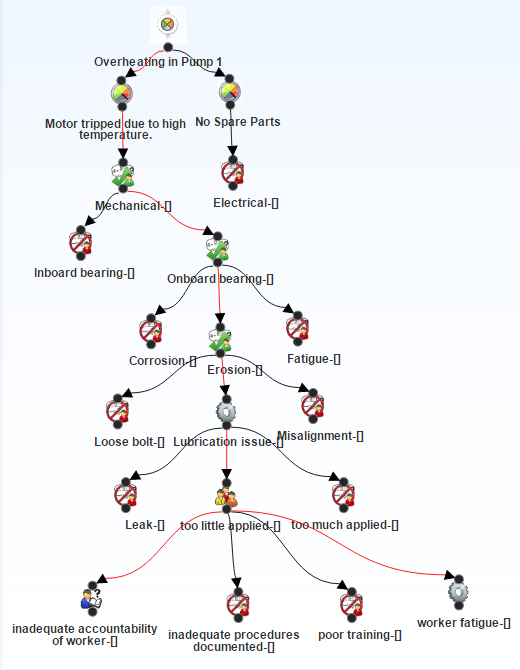In the Logic Tree, a hypothesis is represented by a Hypothesis node, which is defined in an associated RCA Hypothesis. Hypothesis nodes can appear below Failure Mode nodes and other Hypothesis nodes in the Logic Tree. When you add a Hypothesis node to the Logic Tree, a link is created between the RCA Hypothesis and the RCA. A link is also created between the RCA Hypothesis and either the RCA Failure Mode or the predecessor RCA Hypothesis.
The following image shows an example of how a Hypothesis node and the associated RCA Hypothesis will look in the Logic Tree when it is first created.

To the right of the label that you assign to the Hypothesis node, a number appears, indicating the level of confidence that the team has in the hypothesis being true. After a given RCA Hypothesis has been created, the team can create an RCA Verification to test the hypothesis. The team will then change the state of the RCA Hypothesis according to the results of the RCA Verification.
You can define multiple Hypothesis nodes for any RCA Failure Mode or RCA Hypothesis, meaning that one cause could have been caused by something else. For example, a lubrication issue may cause a cooling water pump to overheat, but that lubrication issue was caused by an operator who did not apply enough lubricant, which was caused by inadequate accountability of workers. In this case, the lubrication issue is a physical cause, too little lubrication applied is a human cause, and the latent root cause is the inadequate accountability of workers. The following image shows how this scenario would appear in the Logic Tree.
